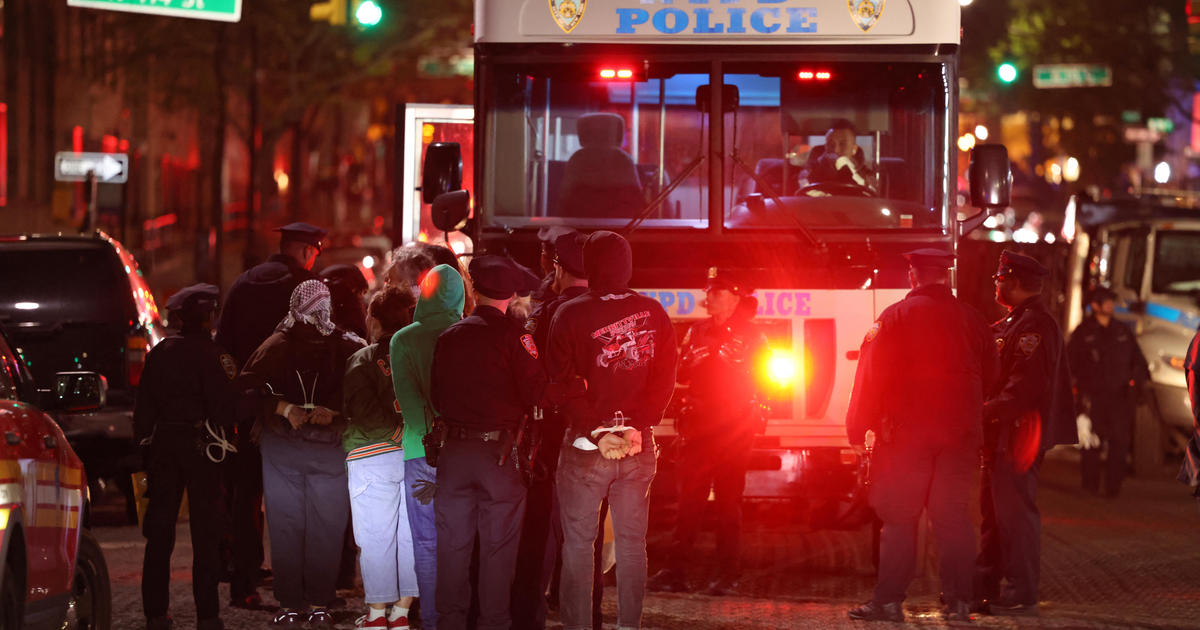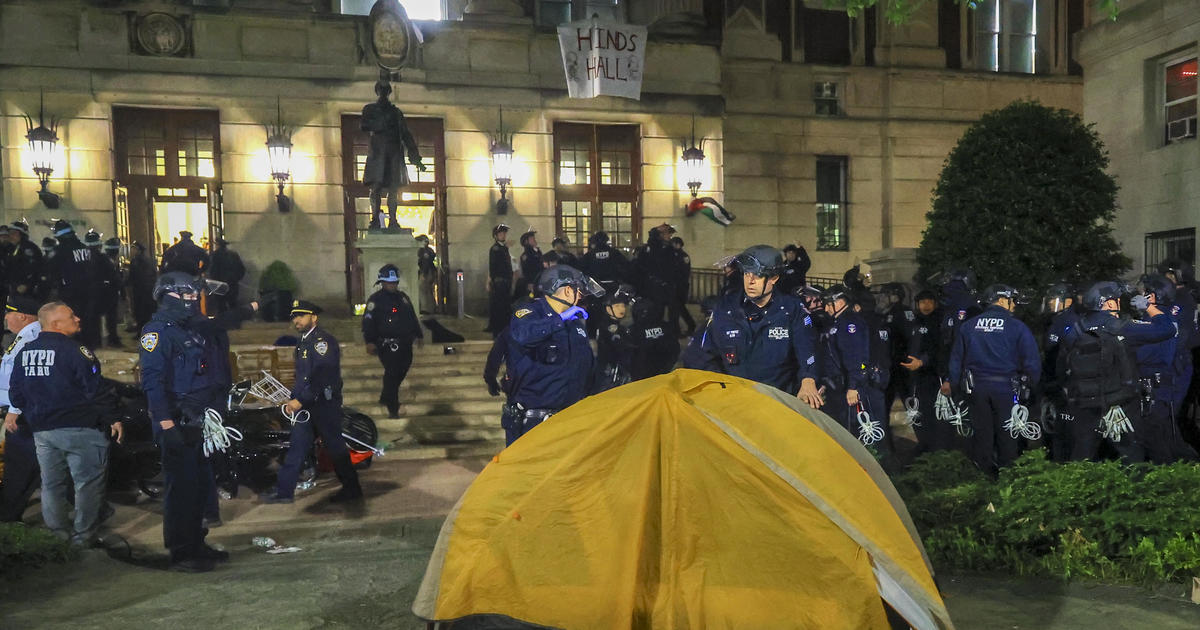Disparities in race, and wealth, impacting how much public school funding certain districts receive
NEW YORK - CBS News uncovered data that shows disparities in school funding.
In many cases, districts with large populations of minority students tended to receive less state money.
In Suffolk County, the disparity is also wealth-based.
The problem is being tackled with new initiatives.
"When people say that there's a bad stigma around minorities or low funded schools it's a little hurtful, because we have the drive, and once you have the drive it doesn't matter what resources you have, you can make it work," Minnahil Tariq said.
Tariq, 17, said her drive and the support from her teachers and family are what helped her graduate from Brentwood High School in June with a Regents diploma, GPA of 100.5, and a head start going to Stony Brook University this fall with 60 credits.
"We have to encourage the parents to donate and we do a lot of fundraising," parent Donna Hasfal said.
Hasfal is part of the school's PTA. Her son Samuel is a junior in the Air Force Junior Reserve Officer Training Corps program, marching band, leadership and orchestra clubs.
"I've been doing many programs in the school. I've joined so many clubs, and I've enjoyed every single one of them," Samuel Hasfal said.
Brentwood's high school has about 6,000 students.
Data obtained by CBS shows from 2015-2020, the majority of students were minority - 10% Black, 84% HIspanic, 4% White - and 80% of students received free or reduced price lunches. According to the data, the district received $25.39 per student in state funding to pay for building investments.
"Where you have poorer students and they have more needs, they actually get less money. And we have seen this across the board," Assemblyman Phil Ramos said.
National school data analyzed by CBS News shows that, in many parts of the country and New York state, the higher the number of Black and Brown students, the less money schools received to invest in building improvements, and the less money they got from the state to help make up the gap.
In Suffolk County, the disparity, however, is predominantly wealth-based. According to the data, of the more than 60 school districts in Suffolk County, just eight reported getting any money for capital projects. The average amount was $23 per student.
"It's much more than having a prettier building. Those are smart boards in the classrooms, those are laptop computers. In the middle of COVID, those schools already had laptops and everything for their students. Over here I had to come up with several hundred thousand, otherwise our students couldn't learn at home," Ramos said.
Ramos, deputy speaker of the New York Assembly, represents parts of Long Island, including Brentwood. He said the state's education funding model is flawed.
"Education has been something that has been disparate against people of color in this country," he said. "A school formula that says your school will receive funding based on the value of homes is completely discriminatory."
Twenty miles away, also in Suffolk County, is the Shoreham-Wading River Central School District, where the current high school population is 650 students, about 10% of Brentwood.
"For Shoreham-Wading revenue, about 80% comes from the local tax base. We get about 20% from aid and grants," Ramos said.
The same federal education data revealed a whopping difference in money received at Shoreham-Wading River for capital investments - $5,993.90 per student a year, where the majority of the students were not minority - 1% Black, 7% Hispanic, 88% White - and only 4% receive free or reduced-price lunch.
"That number we are getting per student is really based on a - I would probably have a debt payment on a bond of over $2 million a year - so we get 30% back on that. It's probably somewhere in that vicinity of where the number is coming from," said Shoreham-Wading River Superintendent Gerard Poole. "I think its a little of a nuance and, again, every student should get everything they need according to be successful, and every student should have the model of Shoreham-Wading River. We work hard to do all that we can for students given the funding that we have, and very appreciative of it."
Anthony Mango is a high school sophomore at Shoreham-Wading River and is also a rising star who participates in several programs including track and field. His dream is to become a teacher, because of the influence his teachers have on him.
"It's really easy to get into any of these programs. Everyone is so inviting - hey, come do this, come do that," Mango said. "When you actually have a teacher that cares about you, you say hey, you know, it's not just a boring old class. I have someone that cares about me. I want do well for them and for me."
His mother said he's the third in the family to attend the school district.
"No matter what your interests are, there is some group here that you can get along with," Linda Mango said.
Shoreham-Wading River's graduation rates have remained in the 90th percentile, Brentwood is at its highest since 2015 at 78%.
"There are so many programs we want to add, and we need the space, so if we can build that would be fantastic, also. So we need the money for that," Wanda Ortiz-Rivera of the Brentwood Union Free School District said. "Despite the economic challenges we have here, we have a community that is very determined. Our kids try. They're smart, intelligent, successful."
Still, despite grants, donations, and some state money, financial disparities affect the school system, and how much can be offered to students.
"This is not about taking away from those schools. This is about uplifting the schools that are underfunded," Ramos said.
To address the financial inequality, Ramos and several other elected officials helped push for foundation aid, which provides additional funding to school districts in need. This year, he secured over $300 million for Brentwood, which the district said went towards improvements like new playgrounds, and a state of the art sports center.
"Foundation aid is a stream of money that is designed only to go to communities of color, school districts of color to make up the imbalance in the lack of wealth in the homes," Ramos said.
One of the most important factors in striking a better balance for students is investing in dedicated teachers.
"It's great the teachers are there for us, because I don't think if it were for them I wouldn't have been in such a great position," Samuel Hasfal said.
The state Department of Education said districts have three major funding sources - local, state and federal revenue - and the specific mix varies for each district. More funds are given to districts with higher levels of student need or low levels of local resources. They credit foundation aid, and building aid, which provides districts partial reimbursement for capital construction costs, including more for schools with less local wealth.
Additionally, it doesn't control how funds are allocated among schools within a district.
While state and local funding are provided, it goes through a budget process with officials and voters on allocation and use.



